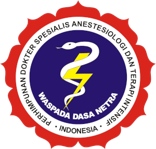Functional and Quality of Life Outcomes of Multimodal Pain Management in Head and Neck Cancer Patients: A Case Series
Abstract
Background: Head and neck cancer (HNC) is the sixth most common cancer globally. Patients often experience severe pain, impacting their functional status and quality of life (QoL). Multimodal pain management in head and neck cancer (HNC) is an evidence-based, integrated strategy that combines pharmacological interventions, interventional techniques, and non-drug therapies to target multiple pain pathways simultaneously, thereby optimizing relief while minimizing side effects and improving quality of life.
Methods: This retrospective cohort study analyzed nasopharyngeal carcinoma (NPC) patients at Dr. Sardjito General Hospital (January-June 2023). Inclusion required histologically confirmed NPC with informed consent; exclusion criteria were life-limiting comorbidities or pre-terminal status. We assessed Karnofsky Performance Status (KPS), EORTC QLQ-C30, and Visual Analogue Scale (VAS) at baseline, 1-month, and 12-month intervals. Pain management strategies (pharmacological, physical therapy, psychosocial) were evaluated. Statistical analysis used paired t-tests with Bonferroni correction (SPSS v27; significance p<0.05). Ethical approval was obtained (KE-FK-1413-EC-2023).
Results: Out of 23 initial candidates, 12 patients were included in the final analysis. Significant improvements were observed across all parameters: EORTC QLQ-C30 scores increased from a mean baseline of 69.6 to 88.6 at 1 month and 89.7 at 12 months (p < 0.01), KPS scores improved from 75 to 85 and 90 (p < 0.05), and VAS scores decreased from 8 to 5 and 3 (p < 0.05).
Conclusion: A multimodal pain management approach significantly improves pain control and QoL in NPC patients. The combined use of NSAIDs, opioids, adjuvant medications, psychosocial support, and physical therapy demonstrates efficacy in managing pain and enhancing patient well-being.
Keywords
Full Text:
PDFReferences
- Fagan, J. J., Noronha, V., & Graboyes, E. M. (2021). Making the best of limited resources: Improving outcomes in head and neck cancer. American Society of Clinical Oncology Educational Book, 41, 1-11. https://doi.org/10.1200/EDBK_320923
- Schaller, A., Peterson, A., & Bäckryd, E. (2021). Pain management in patients undergoing radiation therapy for head and neck cancer - A descriptive study. Scandinavian Journal of Pain, 21(2), 256-265. https://doi.org/10.1515/sjpain-2020-0067
- Scott, N. W., Fayers, P. M., & Aaronson, N. K. (2020). The EORTC QLQ-C30 scoring manual (3rd ed.). European Organization for Research and Treatment of Cancer.
- Cocks, K., King, M. T., Velikova, G., Martyn St-James, M., Fayers, P. M., & Brown, J. M. (2023). Content validity of the EORTC Quality of Life Questionnaire QLQ-C30 for use in cancer. European Journal of Cancer, 178, 128-138. https://doi.org/10.1016/j.ejca.2022.10.026
- Efranto, B. H., Soehartono, & Handoko, E. (2021). Correlation of neck nodule size with body mass index and Karnofsky status before and after neoadjuvant cisplatin and 5-fluorouracil chemotherapy in nasopharyngeal carcinoma type 3 patients. Oto Rhino Laryngologica Indonesiana, 51(1). https://doi.org/10.32637/orli.v51i1.412
- Cho, S. F., Rau, K. M., Shao, Y. Y., et al. (2019). Patients with head and neck cancer may need more intensive pain management to maintain daily functioning: A multi-center study. Supportive Care in Cancer, 27, 1663-1672. https://doi.org/10.1007/s00520-018-4404-x
- Takiar, R., & D'Cruz, A. (2017). Impact of pain management on quality of life in head and neck cancer patients. Supportive Care in Cancer, 25(6), 1999-2007. https://doi.org/10.1007/s00520-017-3699-3
- Epstein, J. B., & Schwartz, S. M. (2019). Management of pain in head and neck cancer patients. Journal of Pain and Symptom Management, 58(5), 799-806. https://doi.org/10.1016/j.jpainsymman.2019.06.010
- Hajd√∫, S. F., Wessel, I., Dalton, S. O., et al. (2022). Swallowing exercise during head and neck cancer treatment: Results of a randomized trial. Dysphagia, 37, 749-762. https://doi.org/10.1007/s00455-021-10320-5
- Dugué, J., Humbert, M., Bendiane, M. K., et al. (2022). Head and neck cancer survivors' pain in France: The VICAN study. Journal of Cancer Survivorship, 16, 119-131. https://doi.org/10.1007/s11764-021-01010-0
- Ren, J. L., Rojo, R. D., Perez, J. V. D., et al. (2021). Variations in pain prevalence, severity, and analgesic use by duration of survivorship: A cross-sectional study of 505 post-treatment head and neck cancer survivors. BMC Cancer, 21, 1304. https://doi.org/10.1186/s12885-021-09024-8
- Anekar, A. A., Hendrix, J. M., & Cascella, M. (2023). WHO analgesic ladder. In StatPearls. StatPearls Publishing. https://www.ncbi.nlm.nih.gov/books/NBK554435/
- Bolnykh, I., Patterson, J. M., Harding, S., et al. (2024). Cancer-related pain in head and neck cancer survivors: Longitudinal findings from the Head and Neck 5000 clinical cohort. Journal of Cancer Survivorship. Advance online publication. https://doi.org/10.1007/s11764-024-01554-x
- Hinther, A., Nakoneshny, S. C., Chandarana, S. P., et al. (2021). Efficacy of multimodal analgesia for postoperative pain management in head and neck cancer patients. Cancers, 13(6), 1266. https://doi.org/10.3390/cancers13061266
- Fayers, P., & Bottomley, A. (2002). Quality of life research within the EORTC-The EORTC QLQ-C30. European Journal of Cancer, 38(Suppl 4), S125-S133. https://doi.org/10.1016/S0959-8049(01)00448-8
Refbacks
- There are currently no refbacks.








